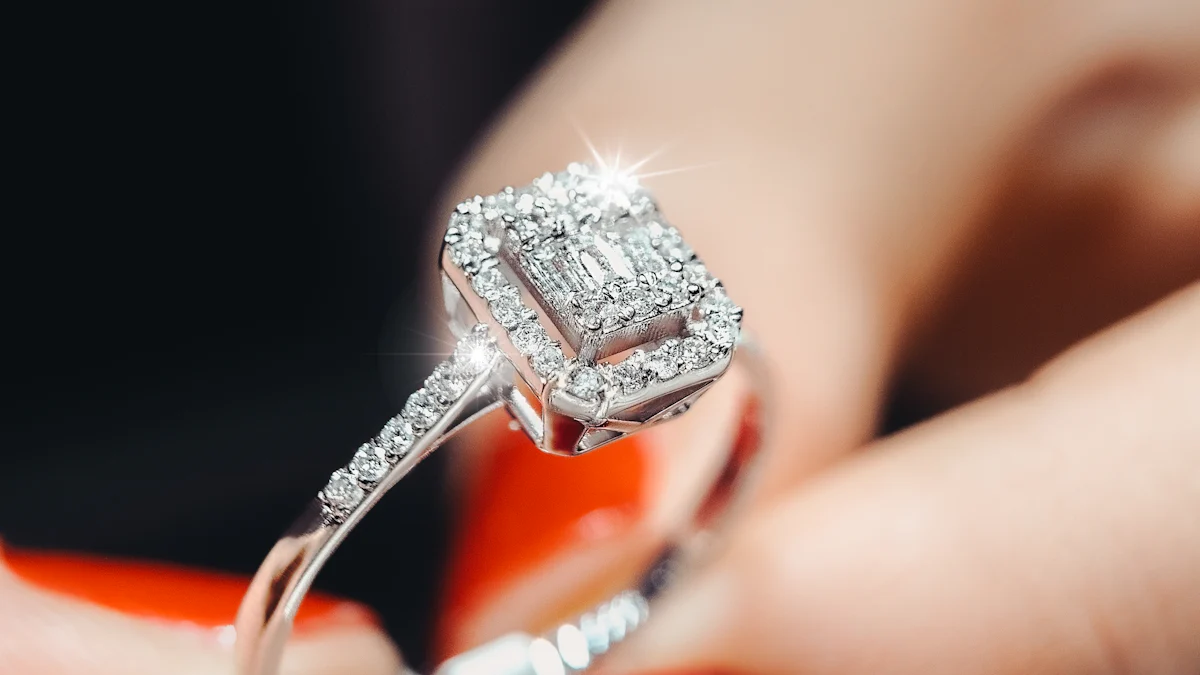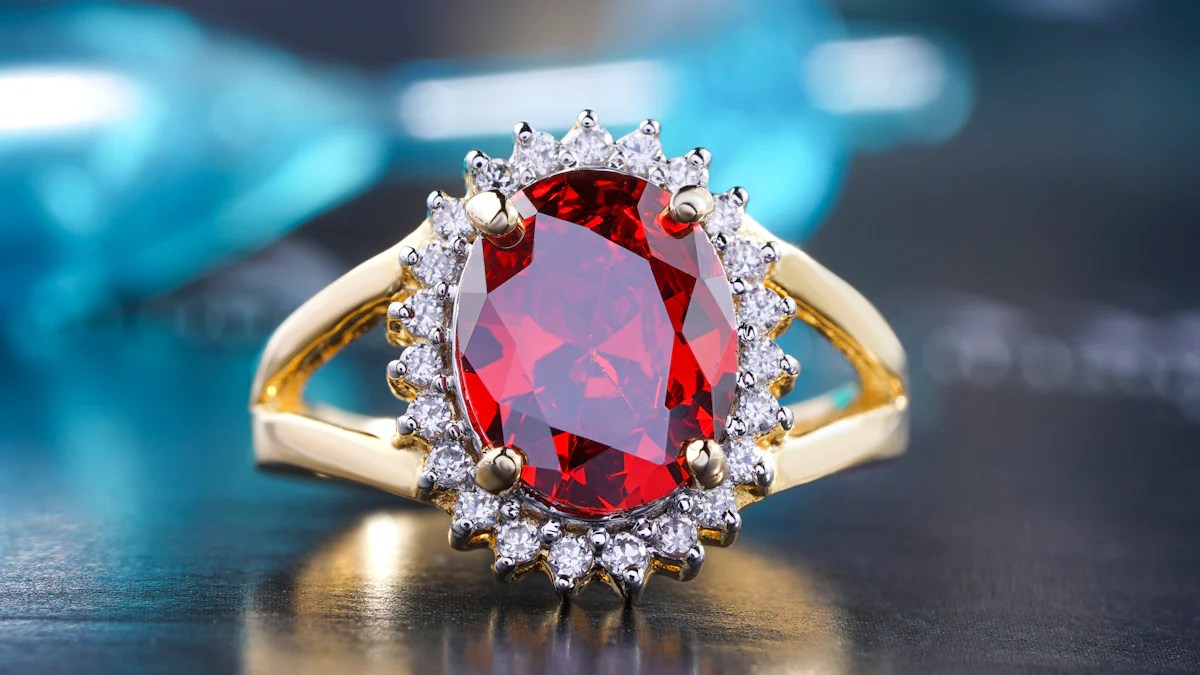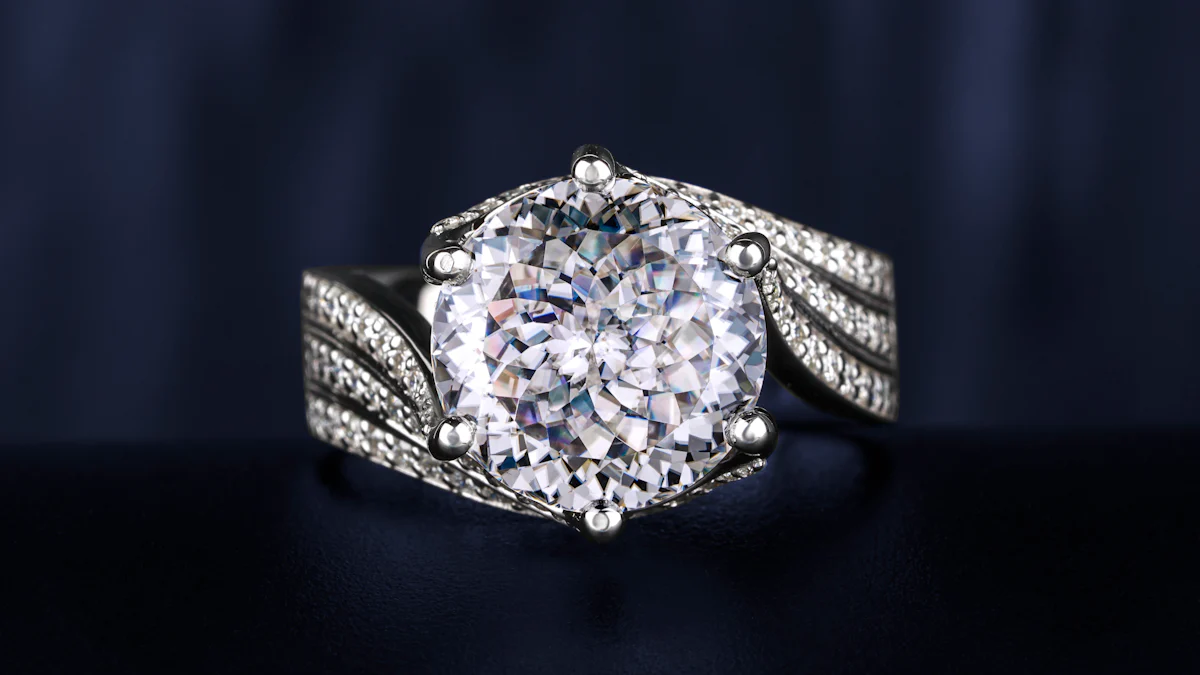Understanding CT TW vs CTTW in Diamonds

When you explore the world of diamonds, understanding terms like CT and CTTW becomes essential. CT refers to the weight of a single diamond, measured in carats. On the other hand, CTTW stands for "carat total weight," representing the combined weight of all diamonds in a piece of jewelry. This distinction is crucial because it affects the value and appearance of the jewelry. Knowing what does CT TW mean helps you make informed decisions, ensuring you get the best value for your investment in these precious stones.
What Does CT TW Mean in Diamonds?
Understanding what does CT TW mean is crucial when you delve into the world of diamonds. CT TW stands for "carat total weight," which refers to the combined weight of all diamonds in a piece of jewelry. This term is essential for evaluating the overall value and appearance of diamond jewelry, especially when multiple stones are involved.
Definition of Carat
A carat is a unit of measurement used specifically for gemstones, including diamonds. One carat equals 200 milligrams or 0.2 grams. This standardized measurement ensures consistency and precision in the diamond industry. When you see a diamond labeled with a carat weight, it indicates the weight of that single stone. For example, a diamond weighing 0.75 carats might be expressed as 3/4 ct. This measurement helps you understand the size and weight of the diamond, which plays a significant role in its value.
Importance of Carat Weight in Diamonds
Carat weight significantly impacts the price and value of diamonds. Larger carat weights are rarer and more challenging to find, which makes them more expensive. For instance, a 1.0-carat diamond typically costs more than two 0.50-carat diamonds combined. This is because the price per carat increases at certain benchmark sizes, such as 0.50 cts, 1.00 cts, and 2.00 cts. When you consider purchasing a diamond ring, understanding the carat weight helps you assess its value and quality. While larger diamonds often hold more value, other factors like cut, color, and clarity also influence diamond pricing. Therefore, knowing the carat weight allows you to make informed decisions when buying diamond jewelry.
Understanding Total Carat Weight (CTTW)

When you shop for diamond jewelry, understanding the concept of total carat weight (CTTW) becomes essential. This term refers to the combined weight of all diamonds in a piece of jewelry. Unlike the weight of a single diamond, which is measured in carats, CTTW provides a broader perspective on the overall size and presence of the diamonds in a piece.
Definition of Total Carat Weight
Total carat weight is a crucial metric in the diamond industry. It represents the sum of the carat weights of all diamonds in a particular piece of jewelry. For example, if a ring contains multiple diamonds, the CTTW will include the weight of each stone added together. This measurement helps you understand the overall value and appearance of the jewelry. When you see a piece labeled with CTTW, it gives you an idea of the total diamond presence, rather than focusing on a single stone.
Significance of CTTW in Multi-Stone Jewelry
In multi-stone jewelry, the significance of CTTW becomes even more pronounced. Pieces like engagement rings often feature a main center stone surrounded by smaller diamonds. The CTTW provides a comprehensive view of the total weight of all these stones combined. This information is vital because it affects the price per carat and the overall quality of the jewelry. While the carat weight of the main stone might be the focal point, the additional stones contribute to the overall carat total diamond weight. Understanding CTTW helps you make informed decisions, ensuring you appreciate the full scope of the diamonds' presence in your chosen piece.
Differences Between Carat Weight and Total Carat Weight

Understanding the difference between carat weight and total carat weight is crucial when evaluating diamonds. These terms, while related, serve different purposes in the diamond industry.
Individual vs. Collective Measurement
Carat weight refers to the weight of a single diamond. When you see a diamond labeled with a specific carat weight, it indicates the size and weight of that individual stone. This measurement helps you assess the value and quality of a single diamond. Larger carat weights often mean higher prices, as larger diamonds are rarer and more desirable.
On the other hand, total carat weight (CTTW) represents the combined weight of all diamonds in a piece of jewelry. For example, if a ring has multiple diamonds, the CTTW includes the weight of each stone added together. This collective measurement provides a broader perspective on the overall presence of diamonds in a piece. It is especially important in multi-stone jewelry, such as engagement rings, where the total weight of all stones contributes to the piece's overall value and appearance.
Calculating Total Carat Weight
Calculating total carat weight involves adding the carat weights of all diamonds in a piece of jewelry. For instance, if a piece contains three diamonds weighing 0.30, 0.20, and 0.10 carats, the CTTW would be 0.60 carats. This calculation helps you understand the total diamond presence in the jewelry, which influences its price per carat and overall value.
When shopping for diamond jewelry, knowing how to calculate CTTW allows you to make informed decisions. It ensures you appreciate the full scope of the diamonds' presence, rather than focusing solely on individual stones. Understanding both carat weight and total carat weight helps you evaluate the quality and value of diamond jewelry effectively.
Common Misunderstandings
When you explore the world of diamonds, you might encounter some common misunderstandings about total carat weight (CTTW). These misconceptions can affect your perception of a diamond's value and quality. Understanding these misunderstandings helps you make informed decisions when purchasing diamond jewelry.
Misinterpretation of CTTW
Many people confuse CTTW with the weight of a single diamond. However, CTTW refers to the total carat weight of all diamonds in a piece of jewelry. For example, if a ring contains several diamonds, the CTTW is the sum of the weight of each diamond. This measurement provides a comprehensive view of the total presence of diamonds in the jewelry. It is crucial to remember that CTTW does not indicate the size of an individual diamond but rather the combined weight of all stones.
Clarifying Misconceptions
Misunderstandings about CTTW often lead to confusion about diamond pricing and value. Some buyers assume that a higher CTTW means a larger single diamond, which is not the case. The total carat weight includes all diamonds in the piece, affecting the overall price per carat. When evaluating diamond jewelry, consider both the CTTW and the individual carat weight of each stone. This approach ensures you understand the full scope of the diamonds' presence and their impact on the jewelry's quality and appearance.
By clarifying these misconceptions, you can better appreciate the nuances of diamond jewelry. Understanding the difference between CTTW and individual carat weight helps you assess the true value of a piece, ensuring you make informed choices when shopping for diamonds.
How to Use This Information When Buying Diamonds
When you decide to buy diamonds, understanding terms like carat weight and total carat weight (CTTW) becomes crucial. These concepts help you evaluate the value and quality of the jewelry you are considering. Here are some practical tips to guide you through the process.
Practical Tips for Diamond Buyers
-
Understand the Terminology: Familiarize yourself with terms like carat, CTTW, and CTW. Knowing that carat weight refers to a single diamond's weight, while total carat weight represents the combined weight of all diamonds in a piece, helps you make informed decisions.
-
Evaluate the Total Carat Weight: When looking at a piece of jewelry, especially a diamond engagement ring, consider the total carat weight. This measurement gives you an idea of the overall presence of diamonds in the piece. For example, a ring with a CTTW of 1.5 carats might have a main stone weighing 1 carat and smaller stones making up the rest.
-
Consider the Price Per Carat: The price per carat can vary significantly based on the total weight and quality of the diamonds. Larger diamonds often command higher prices, but the total carat weight can also influence the overall price. Compare different pieces to find the best balance between size and cost.
-
Inspect the Quality: Besides carat weight, assess other factors like color and clarity. These elements impact the value and appearance of the diamonds. A higher total carat weight does not always mean better quality if the stones lack clarity or have poor color.
-
Seek Professional Advice: Consult with jewelry experts or gemologists. They can provide insights into diamond pricing and help you understand the nuances of total carat weight. According to a survey of 41 industry experts, professionals often rely on expert advice when purchasing diamonds themselves.
Making Informed Decisions
Making informed decisions requires a comprehensive understanding of diamonds and their characteristics. By focusing on both carat weight and total carat weight, you can better appreciate the value of the jewelry. Remember, a diamond engagement ring with a higher CTTW might look impressive, but ensure the individual stones meet your standards for quality and appearance. Use this knowledge to navigate the market confidently and choose pieces that truly reflect your preferences and budget.
Understanding the key differences between CT and CTTW is essential when purchasing diamond jewelry. CT refers to the carat weight of a single diamond, while CTTW or CTW indicates the total carat weight of all diamonds in a piece. This knowledge helps you evaluate the total value and quality of the jewelry. When shopping for diamonds, consider both the individual carat weight and the total weight to make informed decisions. Apply this understanding to ensure you get the best price per carat and appreciate the full scope of your chosen engagement ring or other diamond pieces.
FAQ
What Does CTTW Mean?
CTTW stands for carat total weight. It represents the combined weight of all diamonds in a piece of jewelry. When you purchase diamond jewelry, understanding CTTW helps you evaluate the overall presence and value of the diamonds in the piece.
How Does Carat Weight Affect Diamond Pricing?
Carat weight significantly influences diamond pricing. Larger diamonds are rarer and more desirable, which increases their price. The price per carat often rises at certain benchmark sizes, such as 0.50 cts or 1.00 cts. Understanding carat weight helps you assess the value of a diamond.
Why Is Total Carat Weight Important in Multi-Stone Jewelry?
In multi-stone jewelry, total carat weight provides a comprehensive view of the diamonds' presence. For example, an engagement ring might have a main stone and smaller surrounding stones. The total weight of these stones affects the overall appearance and quality of the piece.
How Can I Use Carat and Total Carat Weight Information When Buying Diamonds?
When buying diamonds, consider both carat weight and total carat weight. Evaluate the total weight to understand the overall presence of diamonds in a piece. This knowledge helps you make informed decisions about the quality and value of the jewelry.
What Are the Four Cs of Diamonds?
The four Cs of diamonds are carat, cut, color, and clarity. These factors determine a diamond's quality and value. Carat refers to the weight, cut affects the sparkle, color indicates the hue, and clarity measures imperfections. Understanding these aspects helps you choose high-quality diamond jewelry.
How Does Color Impact Diamond Quality?
Color impacts a diamond's quality by affecting its appearance. Diamonds range from colorless to light yellow or brown. Colorless diamonds are more valuable because they allow more light to pass through, enhancing their brilliance. Evaluating color helps you assess a diamond's quality.
What Should I Consider About Diamond Pricing?
When considering diamond pricing, look at the carat weight, total weight, and quality factors like color and clarity. Larger diamonds with higher quality often command higher prices. Understanding these elements helps you find the best balance between price and quality.
How Do I Calculate Total Carat Weight?
To calculate total carat weight, add the carat weights of all diamonds in a piece of jewelry. For instance, if a piece has diamonds weighing 0.30, 0.20, and 0.10 carats, the total carat weight is 0.60 carats. This calculation helps you understand the total presence of diamonds.
Why Is Understanding Total Carat Weight Crucial for Engagement Rings?
Understanding total carat weight is crucial for engagement rings because it affects the ring's overall appearance and value. The total weight of all stones, including the main stone and any additional diamonds, contributes to the ring's beauty and price.
How Can I Ensure I Get the Best Price Per Carat?
To get the best price per carat, compare different pieces of diamond jewelry. Consider the total weight, quality factors like color and clarity, and consult with experts. This approach helps you find a piece that offers the best value for your investment.
See Also
A Guide To Diamond Cuts For Engagement Rings
Comparing Tungsten Diamond Rings And Traditional Options
Detailed Analysis Of A 5 Carat Lab Grown Bracelet

